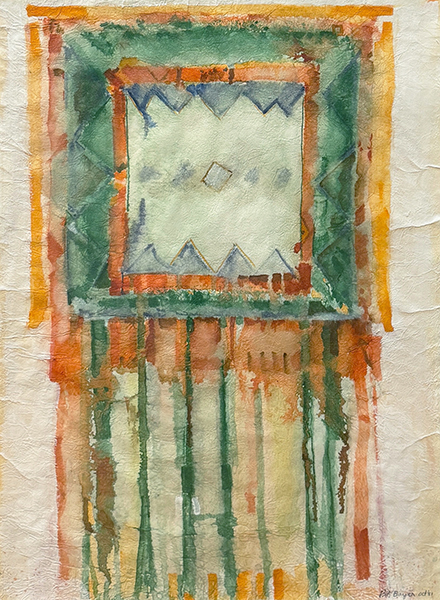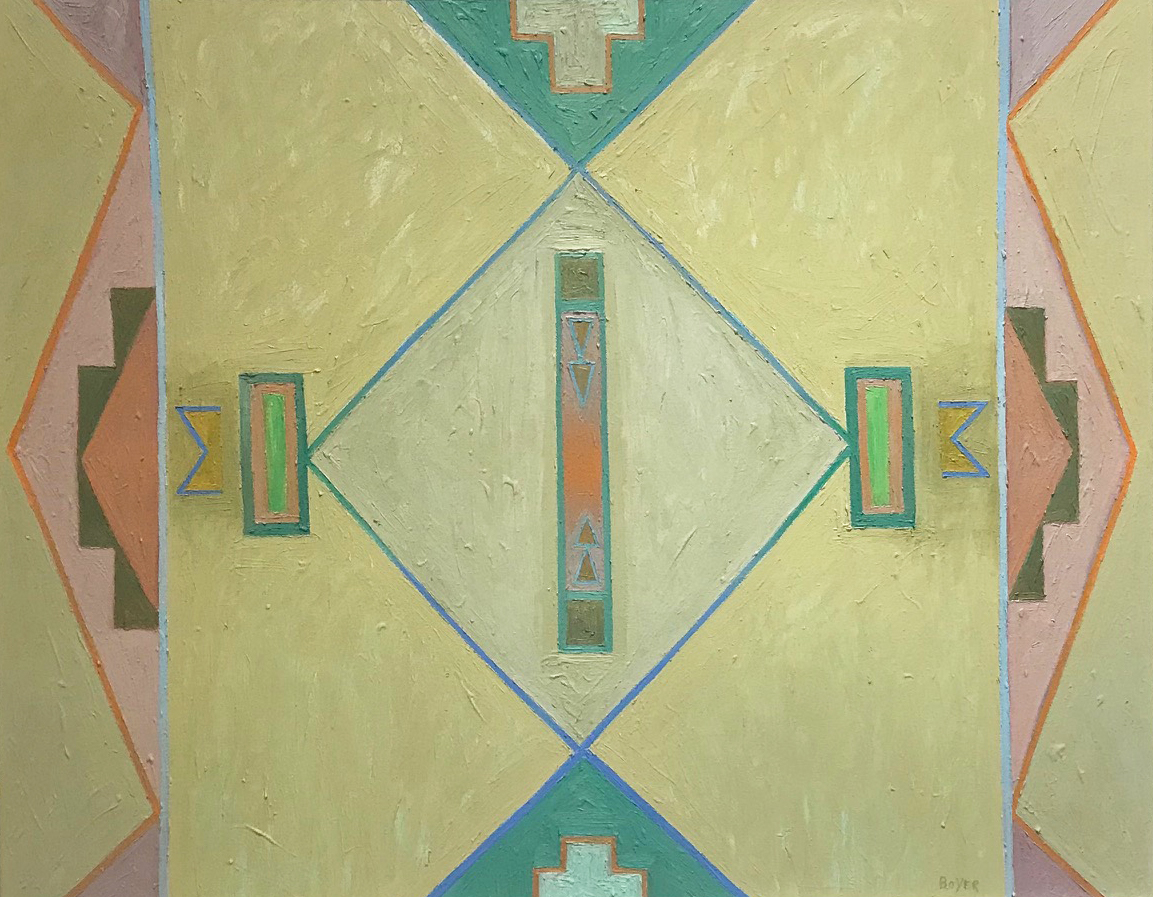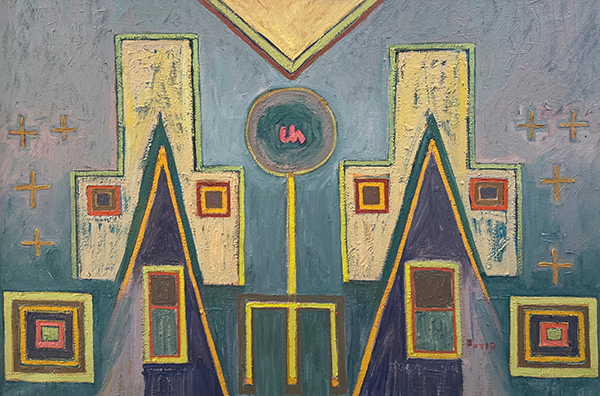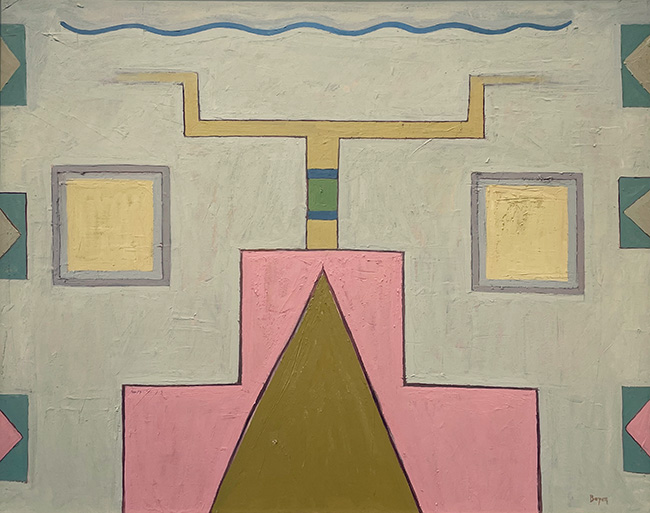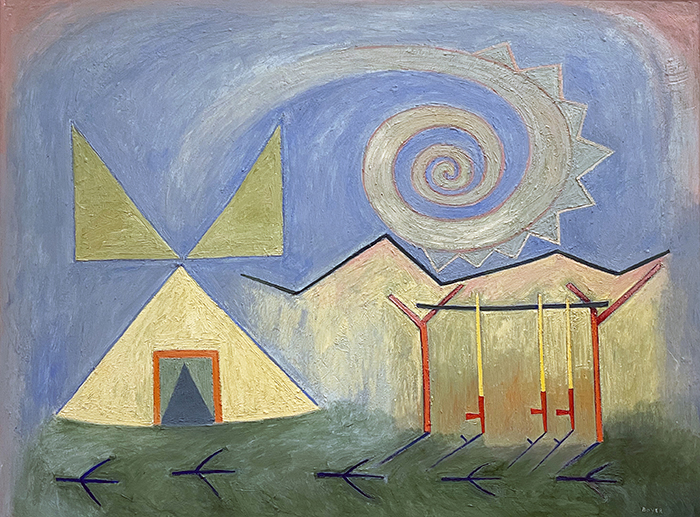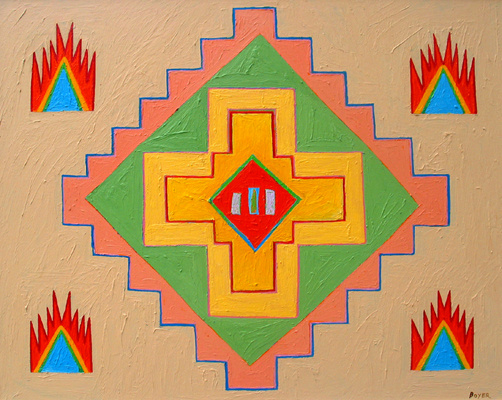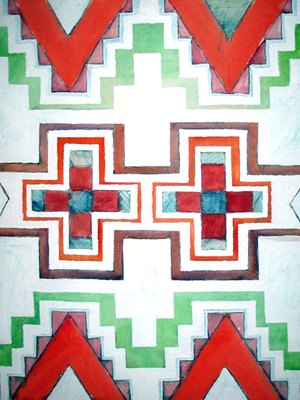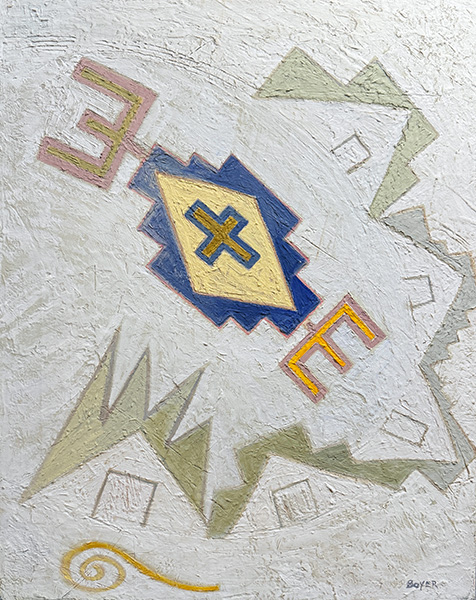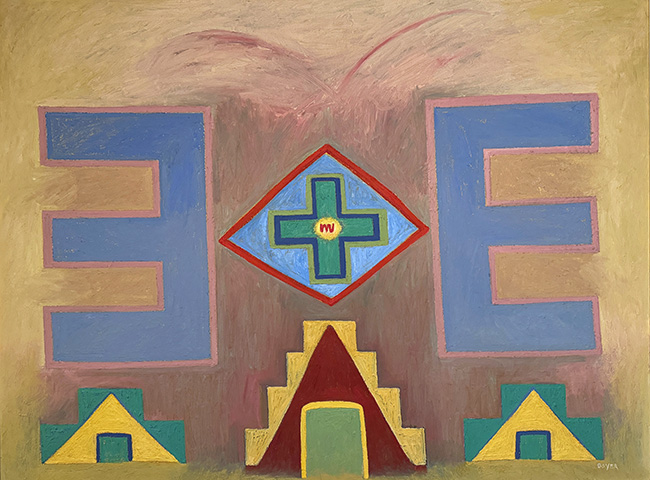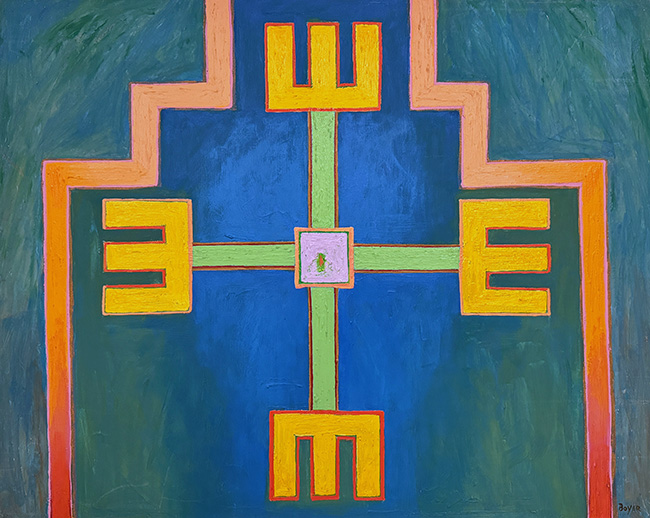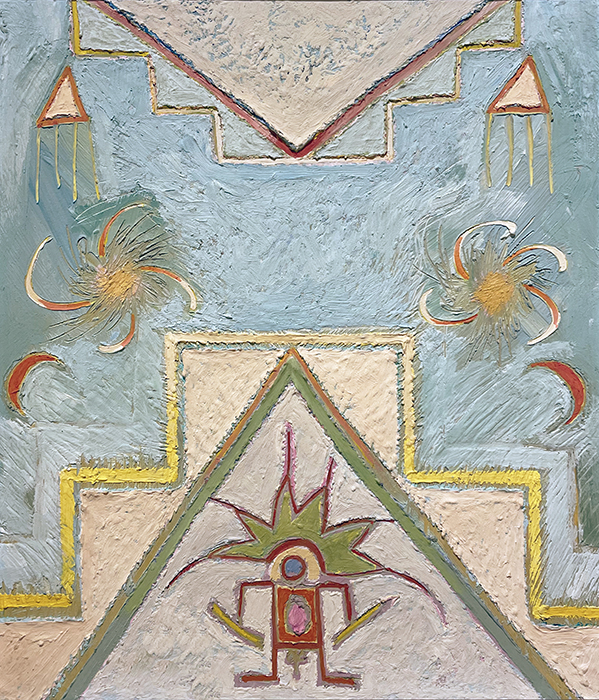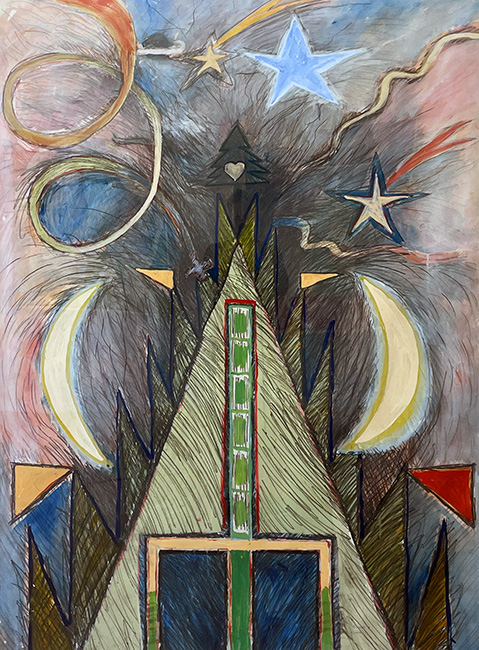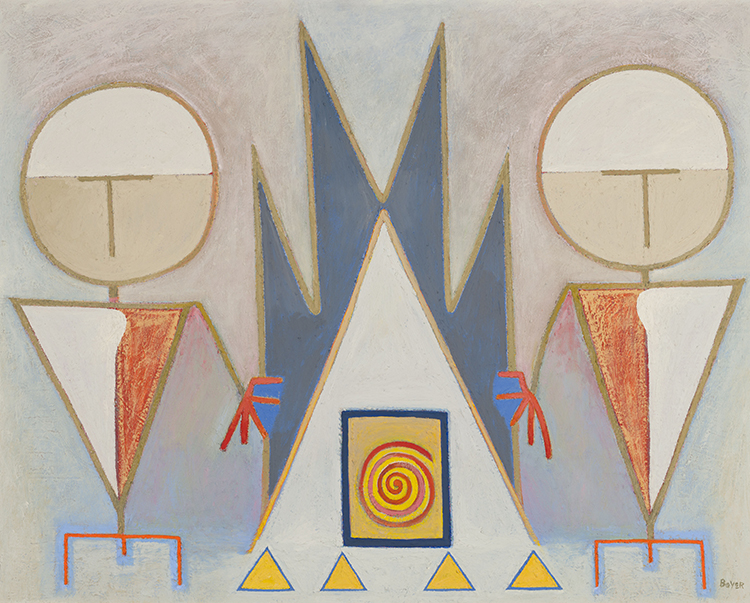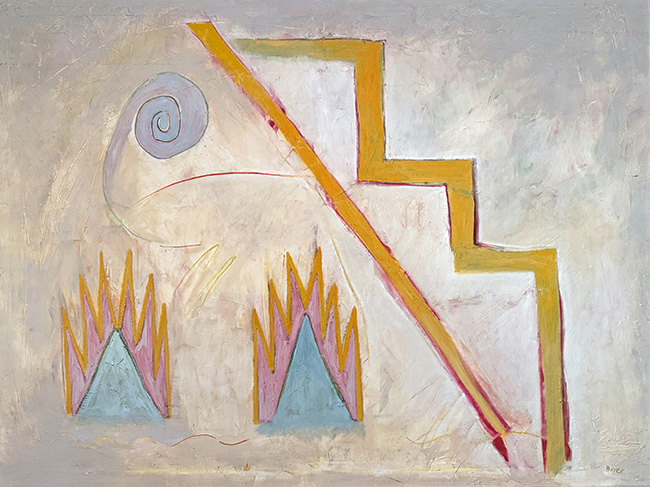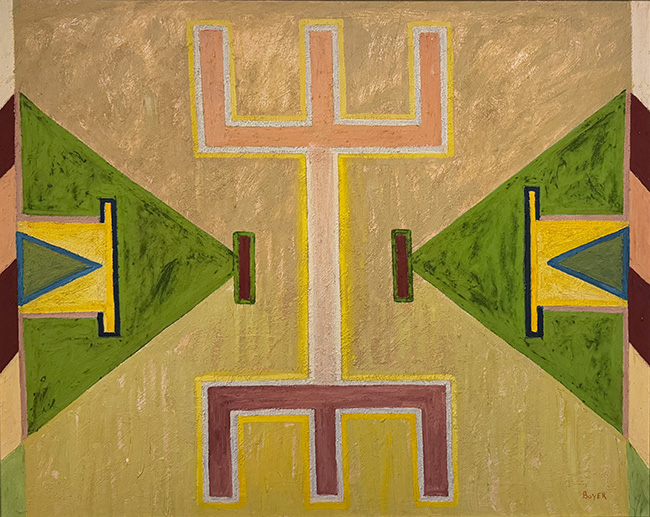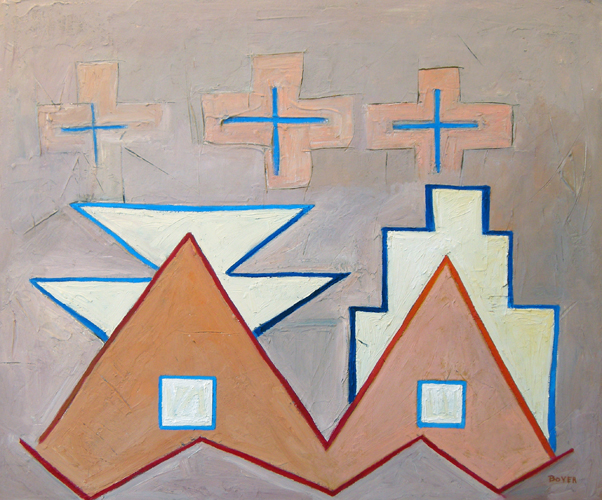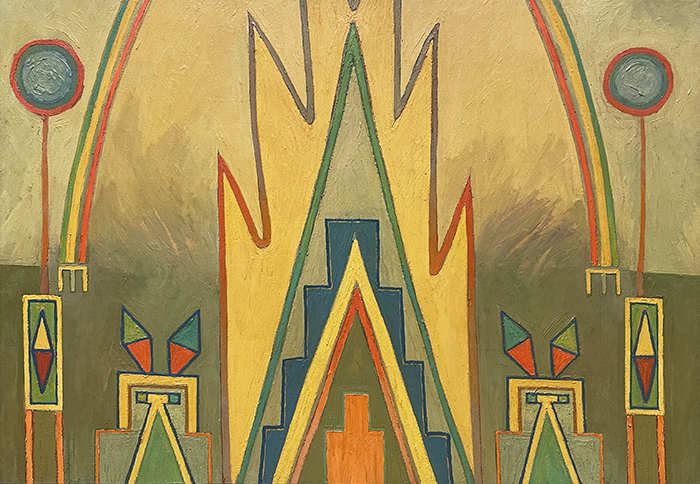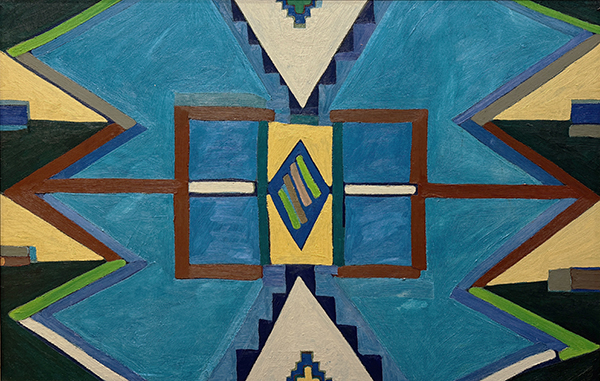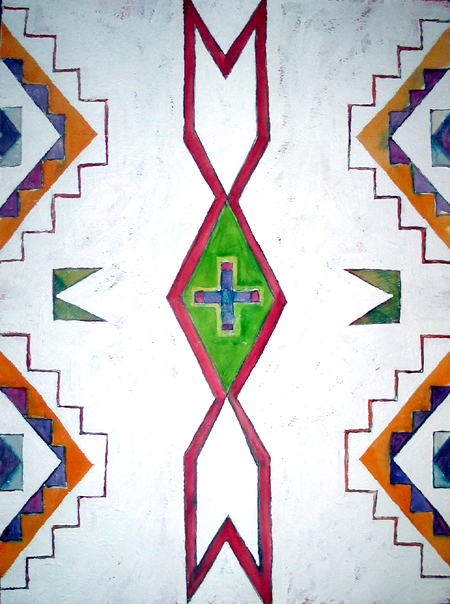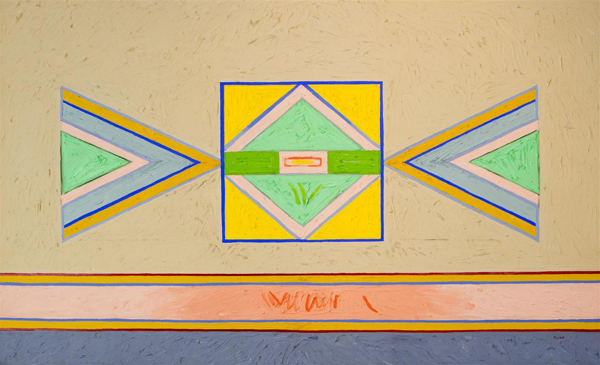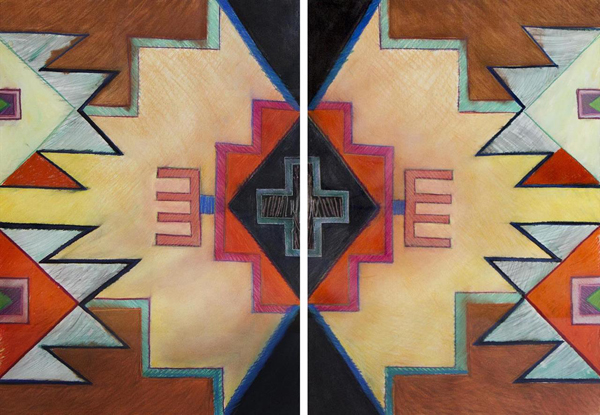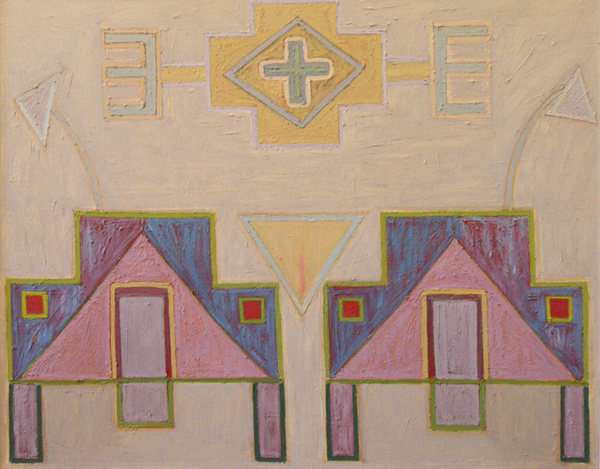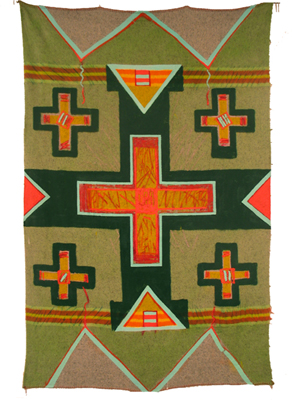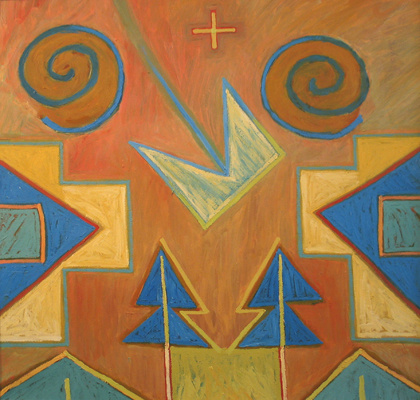Bob Boyer
Bob Boyer (1948-2004) – Biography
Although he lived his entire life in Saskatchewan, Bob Boyer’s work was inspired by his extensive travels throughout North and Central America, Asia, Europe and Scandinavia. Boyer began his artistic career in the late 1960s, painting highly representational portraits and landscapes. By the late 1970s, he experimented with large-scale abstract oil paintings, using vibrant colours informed by personal experiences and the artistic traditions of Northern Plains Aboriginal people.
Boyer graduated from the Regina Campus of the University of Saskatchewan with a Bachelor of Education (Art) in 1971. The late 1960s and early 1970s were a time of great change and intense activity within the Art Department at the University. Studio courses fostered creative experimentation, and encouragement from professors, such as Ted Godwin, led Boyer to develop his own personal aesthetic approach.
Following his graduation from the University, Boyer lived and worked for several years in northern Saskatchewan. His time in northern Saskatchewan was pivotal to the future direction of his art. He traveled extensively to many remote communities, frequently by floatplane, and learned to tan hides and build birch-bark canoes. These early journeys throughout northern Saskatchewan began a process of travel and exposure to different approaches in art, materials, and landscapes which would become central to Boyer’s formation as an artist. In this environment, where forests obstruct the horizon line, his stylistic approach changed dramatically, and his paintings became less representational and more complex in their ideas.
Boyer’s knowledge of the design, philosophy, and spiritual meanings of traditional First Nations art increased enormously after he joined Saskatchewan Indian Federated College (SIFC) in 1978. His paintings from this time reflect an evolving conceptual transition that propelled him completely into abstraction. By the mid-1990s, Boyer’s work had become looser and more introspective, filled with whimsical and, at times, playful images readily identifiable as birds, fish, people, angels, and other figurative elements. At the same time, his work becomes more personal, drawing on his own life stories. Memories of travel, dancing, conversations, and late nights on the powwow trail inspired much of Boyer’s art until his untimely death while performing in the summer of 2004.
Major Exhibitions:
Horses Fly Too, Norman MacKenzie Art Gallery, Regina, 1984.
Bob Boyer: A Blanket Statement organized by the University of British Columbia Museum of Anthropology, Vancouver, 1988.
In the Shadow of the Sun, Canadian Museum of Civilization, Ottawa, 1988.
Shades of Difference: The Art of Bob Boyer, Edmonton Art Gallery, Edmonton, 1991.
Indigena, Canadian Museum of Civilization, Ottawa, 1992.
Bob Boyer: His Life’s Work, MacKenzie Art Gallery in collaboration with the Canadian Museum of Civilization, 2009.
Public Collections:
National Gallery of Canada (Ottawa)
Winnipeg Art Gallery
University of Saskatchewan
MacKenzie Art Gallery (Regina)
Mendel Art Gallery (Saskatoon)
Canadian Broadcasting Corporation (Regina),
Department of Indian and Northern Affairs (Ottawa)
Artist Specialization - Abstract / Colour Field Painting - As a Métis artist, Bob Boyer's painting bears the mark of a dual cultural perspective, one that alternates between the Plains Indian imagery of his Native heritage and the European tradition that provides him with the vocabulary of abstraction. Boyer's work has been informed by colour field painting, specifically by the non-representational and experimental work of the Regina Five group in the 1960s. His first works were painterly, semiabstract depictions of ceremonial and everyday objects used by Native people, borrowing design elements of traditional hide painting and beadwork. Boyer has used a variety of media throughout his career, although he is probably best known for his blanket paintings. In the 1980s he replaced the traditional canvas surface with that of a blanket, addressing the political issues of Native history in Canada, painting scenes alluding to injustice, betrayals, defeats, and environmental destruction. By the mid-1990s Boyer had shifted his focus, choosing instead to encourage the perpetuation and celebration of Native culture. He believes that the time has come for Native people to look beyond the conflicts imposed by Western culture.


